PROTECT YOUR DNA WITH QUANTUM TECHNOLOGY
Orgo-Life the new way to the future Advertising by AdpathwayChickens and gardening go hand-in-hand. Although they can really mess up a garden, having a coop or chicken run alongside the garden is standard practice. While you might not want them rooting around in your veggie beds, planting a garden near their coop is a way to enhance the aesthetics of chicken-raising.
Knowing which plants are no good for chickens and which are is important, though. You don’t want your chickens getting into toxic plants, like onions or garlic. If you’re a flower gardener who wants to diversify your market share, knowing which ones are ok for the coop and which aren’t will save you heartache.
Chickens are known for their destructive tendencies in gardens, and there is usually at least one that gets out of the run regularly despite your best efforts. Even if the garden is not for them, surround their pen with harmless plants that add beauty to your yard.
But before you get out your seed starting tools to get a start on the season, consider this list of plants. All of these are flowering plants that are stunning and safe for chickens.

Nikki’s Purely Chickens Seed Picks
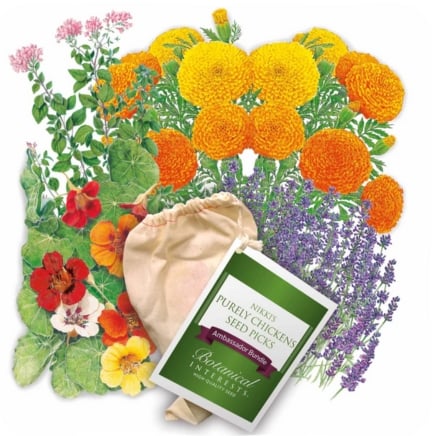
Nikki’s Purely Chickens Seed Picks

Colorado Blend Yarrow Seeds
Candytuft
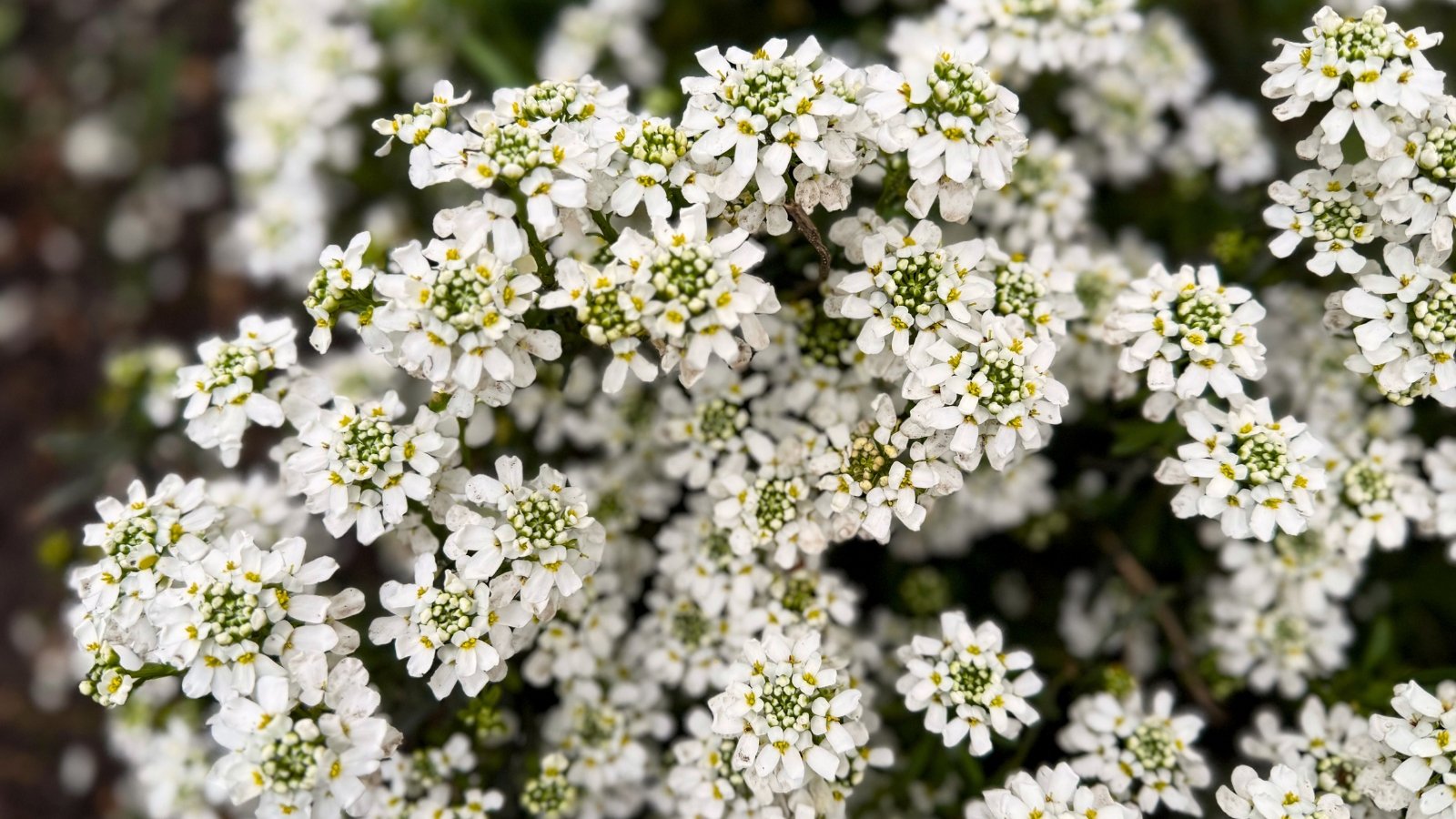 A gentle bloomer that softens tough corners beautifully.
A gentle bloomer that softens tough corners beautifully.We begin with candytuft. This herbaceous perennial is perfect in garden borders, as it’s low-lying. Each shrub provides a uniform rounded texture, and the compound flowers are totally chicken-safe. As a brassica family member, candytuft is edible to both chickens and humans.
The added benefits of including candytuft in your garden are its cooling white color palette and green leathery leaves. It attracts songbirds and pollinators, and grows in sandy, clay, or loamy soil. It also adapts to a wide range of pH concentrations. Pick this one if you have tough soil, or simply enjoy the way it looks.
Beautyberry
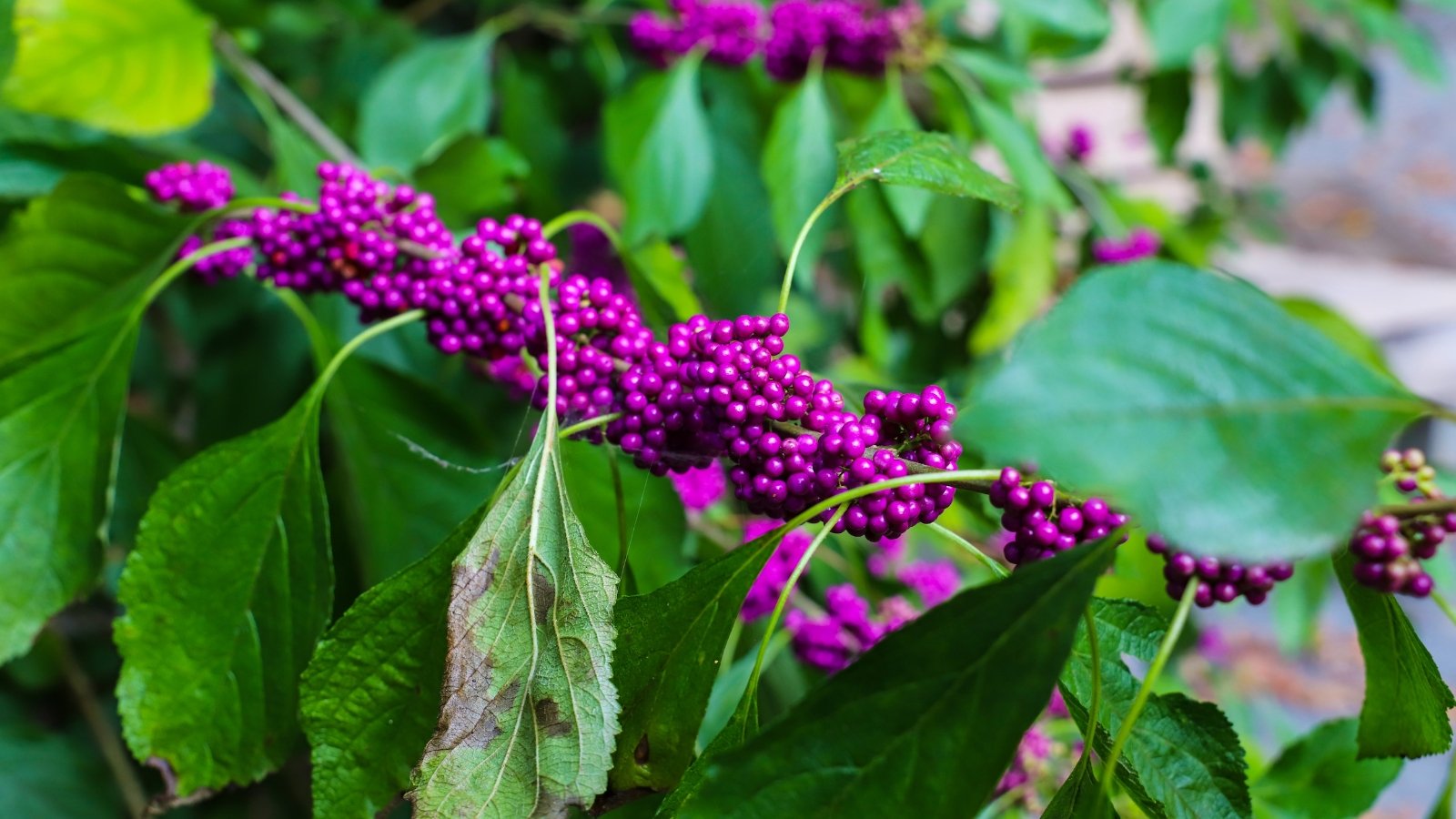 Those violet berries pop just when gardens start to fade.
Those violet berries pop just when gardens start to fade.Often, a plant that is suitable for wild birds is good for chickens, too. American beautyberry is no exception to that rule. This stately, and sometimes sparsely foliaged, plant with arching stems usually stays under five feet but can grow up to eight feet. It produces bright purple berries in fall that your chickies can nibble on if they choose.
As a North American native, other birds and solitary bees benefit from beautyberry. It’s a great plant for a woodland garden, where shade predominates. It’s also suitable for full sun gardens. Plant it along the back of a garden bed to provide some interest and dimension, and don’t worry if your chickens hang out with mockingbirds as they dine on the berries.
Bee Balm
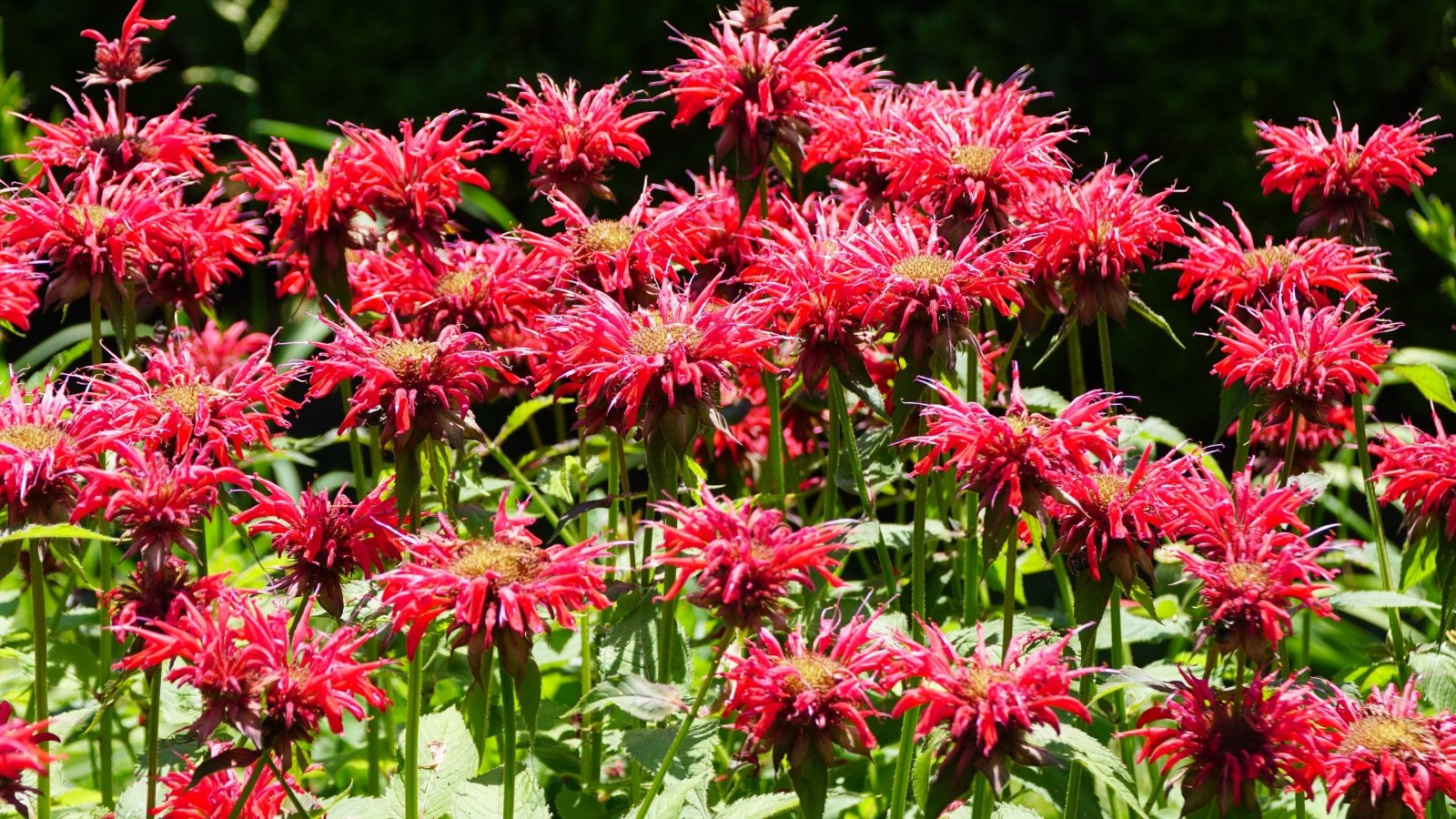 Blooms layer in tiers, each more interesting than the last.
Blooms layer in tiers, each more interesting than the last.Some of the most generous members of the mint family with some of the coolest flowers are those in the Monarda genus. Commonly referred to as bee balm, bergamot, or lemon mint, monardas are perfect for planting in your chicken-safe garden. Enjoy the flowers and leaves in tisanes and baking as well.
My favorites include Monarda citriodora, which is native to the southern US and Mexico, and M. fruticulosa, or spotted bee balm. These have multitiered flowers with interesting coloration. Another similar variety is Lambada bee balm.
Columbine
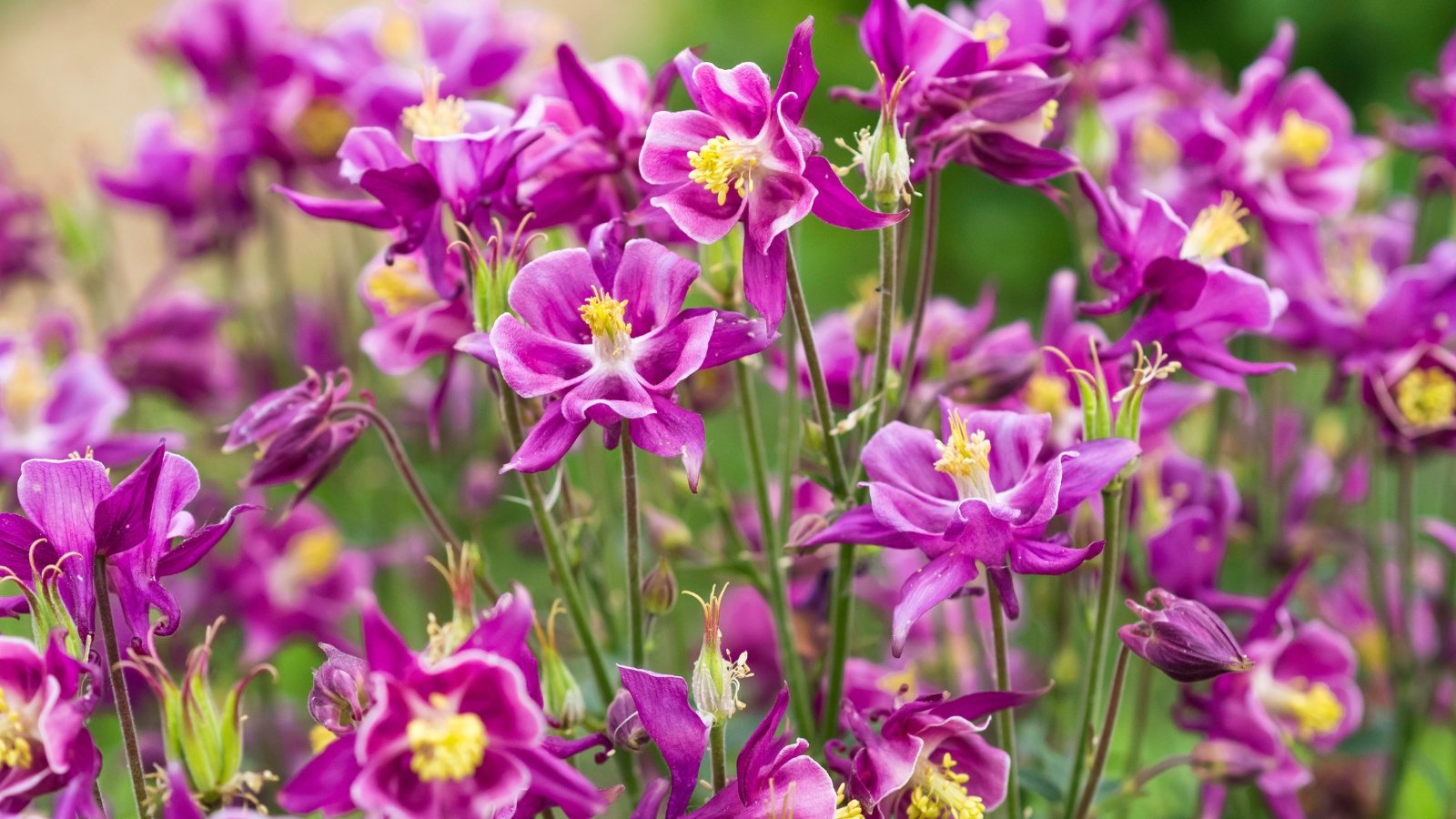 Spring brings out its quirky blooms like little hanging lanterns.
Spring brings out its quirky blooms like little hanging lanterns.While columbine isn’t something your chickens will likely go for, it’s not going to hurt them if they do. This herbaceous perennial handles a range of conditions but prefers a bit of shade in the afternoon. With multiple species native to North America, you will likely find one that is local to you. Columbine’s barbed flowers appear in spring, and its fernlike foliage remains evergreen in temperate areas.
Here in Texas, and throughout the eastern US, red columbine (Aquilegia canadensis) is native. Gardeners in the west can count on Rocky Mountain columbine (A. coerulea). For those who can’t decide, a blend of McKana Giants is a solid choice.
Purple Coneflower
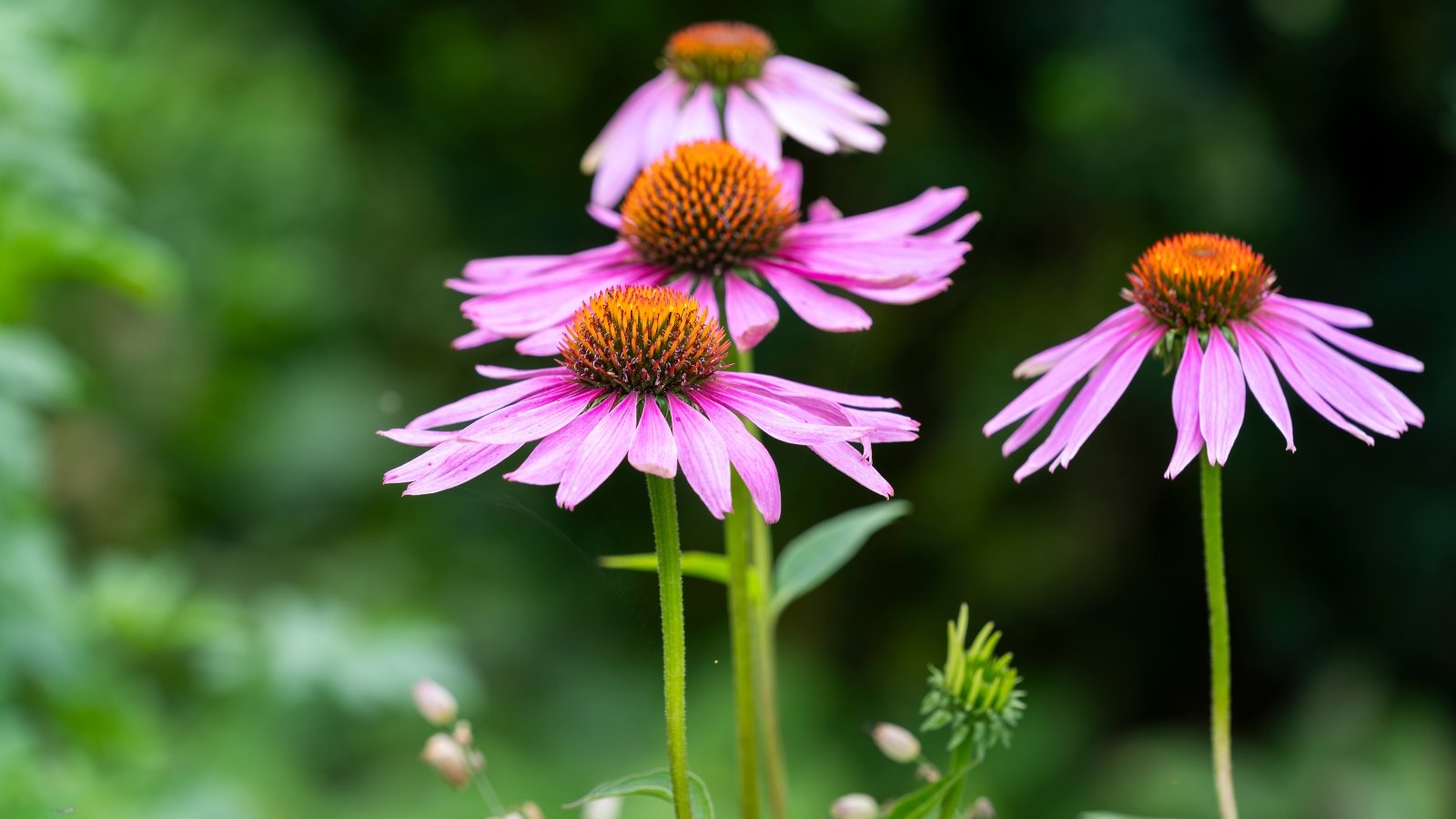 Blooms like a prairie sunset and sticks around all season.
Blooms like a prairie sunset and sticks around all season.Echinacea is indigenous to North America. Another awesome benefit for your chickens is its ability to help chicks fight off E. coli. There’s really no loss that comes from planting this lovely flower in your garden with chickens nearby. Expect a pollination boost to your veggie garden too.
The straight species is a great choice, as studies confirm its effectiveness in boosting chicken health. However, any Echinacea species is safe. For sparse flowers with a truly wild look, E. simulata is lovely, and has a wide range across the eastern and central US. To add pops of yellow to a garden, select E. paradoxa.
Goldenrod
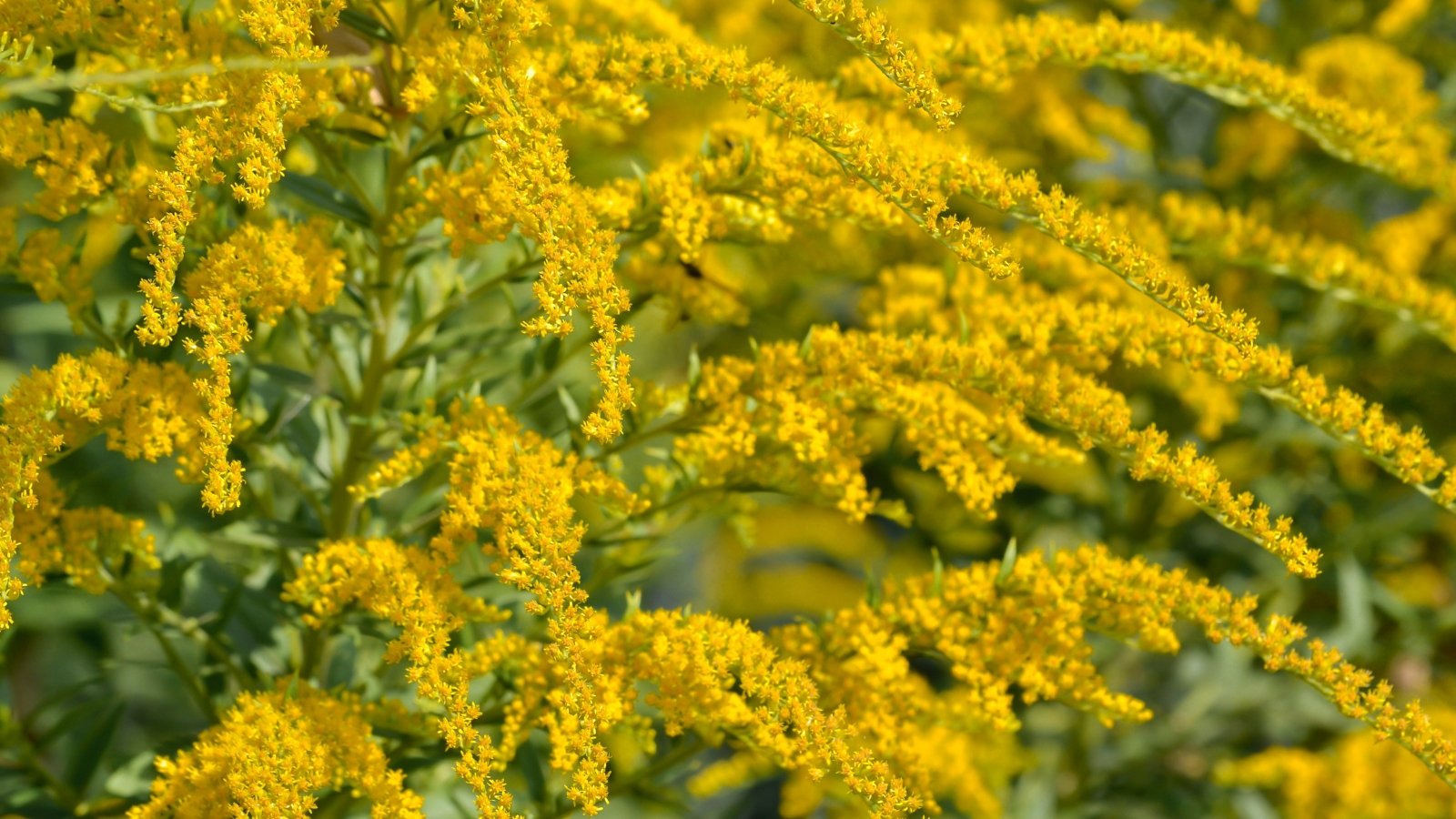 A late bloomer that fills empty spaces with sunshine.
A late bloomer that fills empty spaces with sunshine.What’s safe for wild birds is often safe for your domesticated chickens. Like beautyberry, goldenrod is one of these. In late fall and winter when food sources are scarce, songbirds snack on the seeds of this prolific spreader. That being said, don’t plant goldenrod in a small garden. It will take over and push other plants out.
Look for a species native to your region, as there is one out there for sure. In certain areas, Solidago canadensis is aggressive, and sometimes invasive. You don’t want to plant a few plants only to have them take over your chicken garden in a year. Find one that plays nice with coneflower, columbine, and bee balm.
Peony
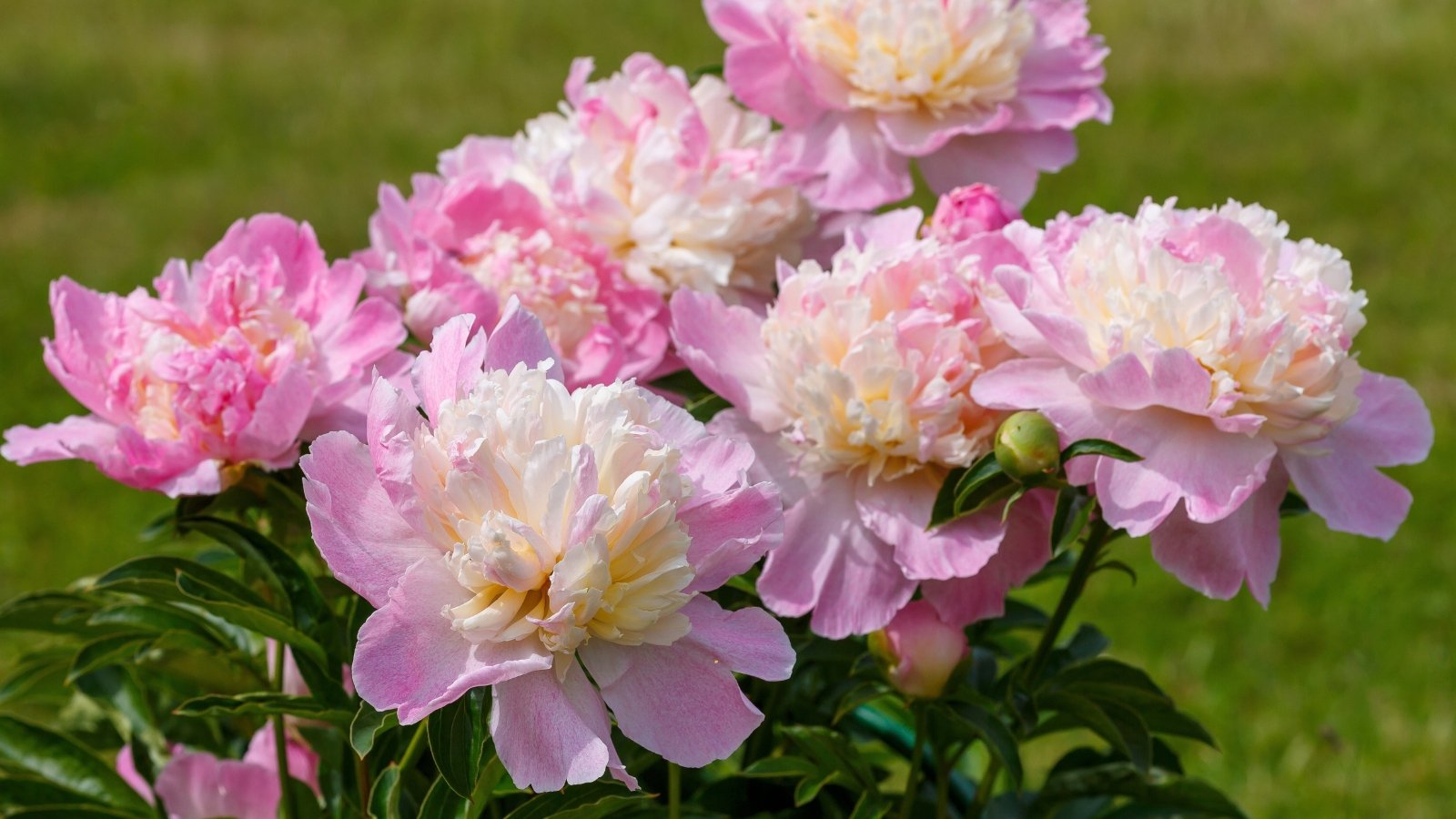 Comes back stronger each year with little fuss needed.
Comes back stronger each year with little fuss needed.Egg farmers, rejoice! Would it blow your mind to learn that fermented peony seed dreg (FPSD) is actually a common chicken supplement used to improve egg-laying? It blew my mind! In that regard, it is totally safe to have peonies around your chicken coop and run.
Tree peonies, and specifically Paeonia ostii – commonly called Osti’s tree peony – are known for their polyunsaturated fatty acid content that makes chickens more productive. But other peonies are harmless. So take your pick of tree or herbaceous types and enjoy their stunning blooms.
Note that taller tree peonies are harder for chickens to destroy than low-lying herbaceous ones.
Yarrow
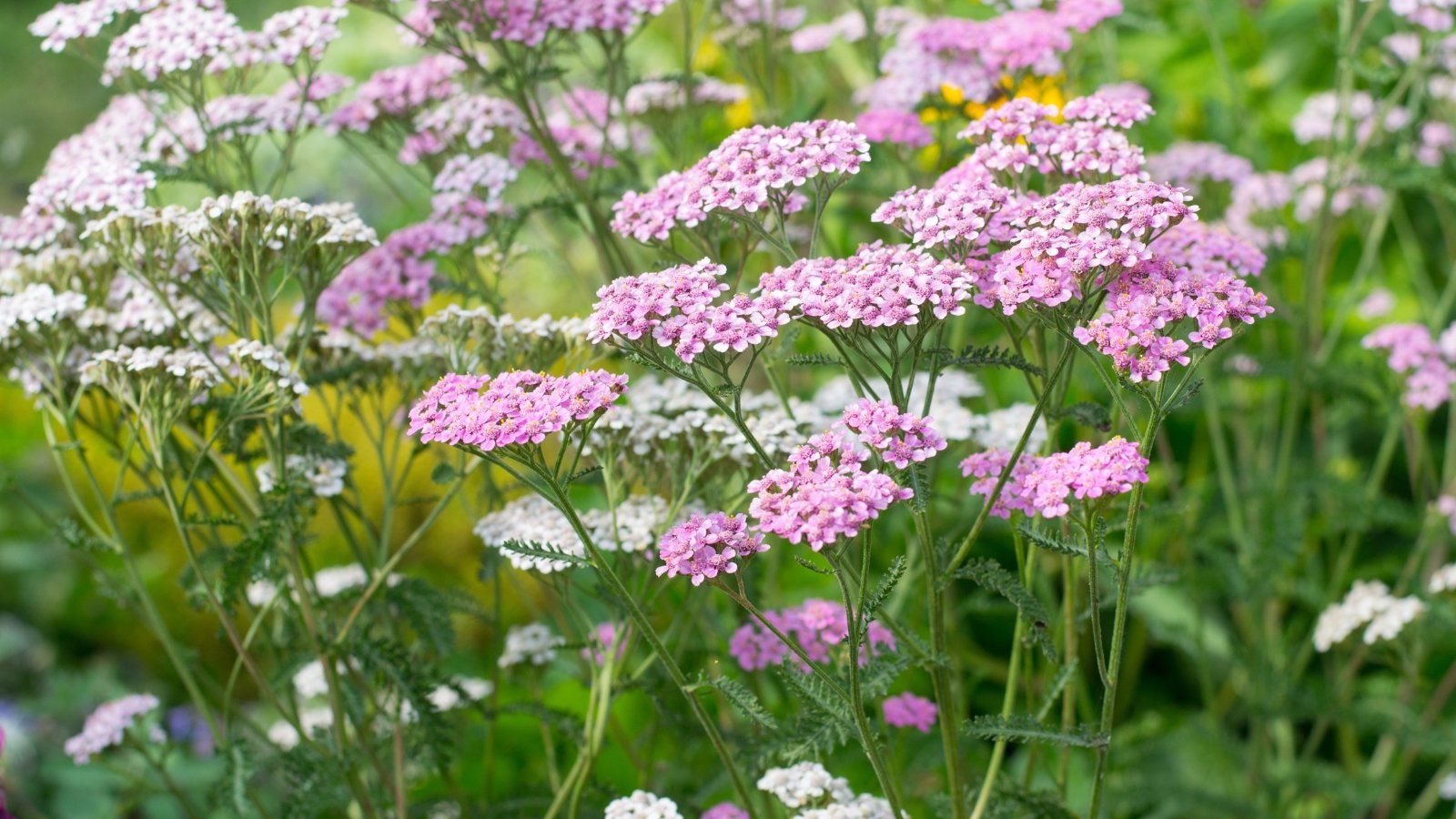 A natural magnet for helpful bugs all season long.
A natural magnet for helpful bugs all season long.Yarrow is an incredible plant. With a long history of ecological and medicinal benefit, it’s no wonder it’s a chicken-safe plant as well. Yarrow is native to much of the Northern hemisphere, and it’s a staple in an insectary garden. While chickens prefer other plants over yarrow, nibbling here and there won’t hurt and may benefit their health.
There are so many colors of yarrow to choose from, so you have plenty of options at your disposal. Blooms of the straight species are white, but there are yellow, red, pink, and orange shades too. The landing pad flowers open in spring and fall, and the leaves colonize bare areas quickly.
If you don’t want them in one area of the garden, rip them out and toss them or move them elsewhere. Yarrow is tough. It handles harsher conditions with ease. A stable patch handles chicken scratching effortlessly.
Calendula
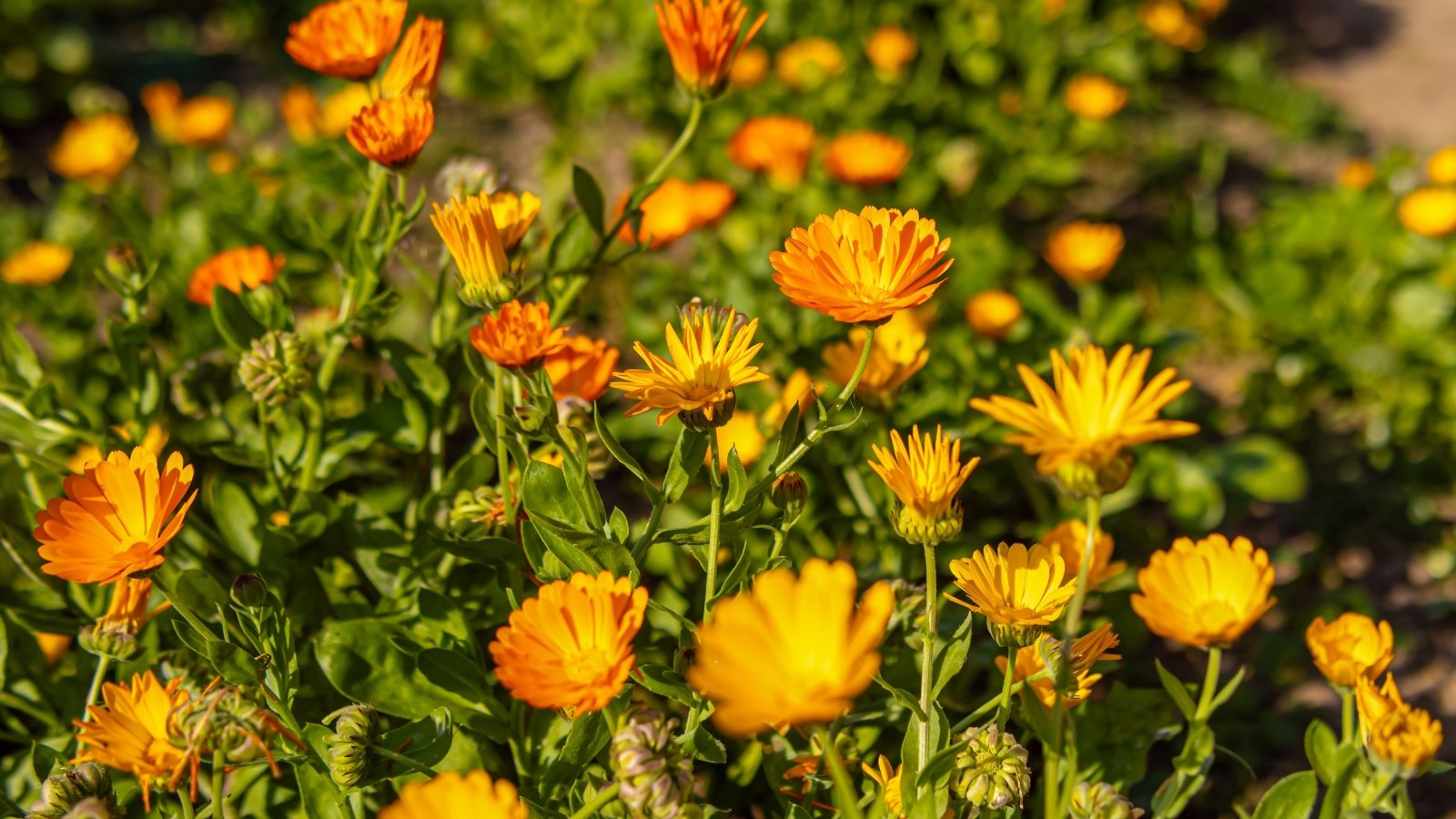 Easy to grow and loved by many garden visitors.
Easy to grow and loved by many garden visitors.Everything we’ve covered up to this point is generally perennial in North America. Calendula is one annual (only perennial in zones 9 to 11) that doesn’t hurt chickens in the slightest. Many sources tout calendula as a supplement for chickens for its digestive and immune-boosting properties.
Regardless of the purported health benefits, a peck of calendula is fine for your feathered friends. You have options for flower types that range from Resina pot marigolds to multi-flowered Bon Bons. For a double dose of chicken-safety and pollination, pick a single-flowered variety. Double flowers overwhelm the centers, making it hard for insects to access pollen and nectar.
Honeysuckle
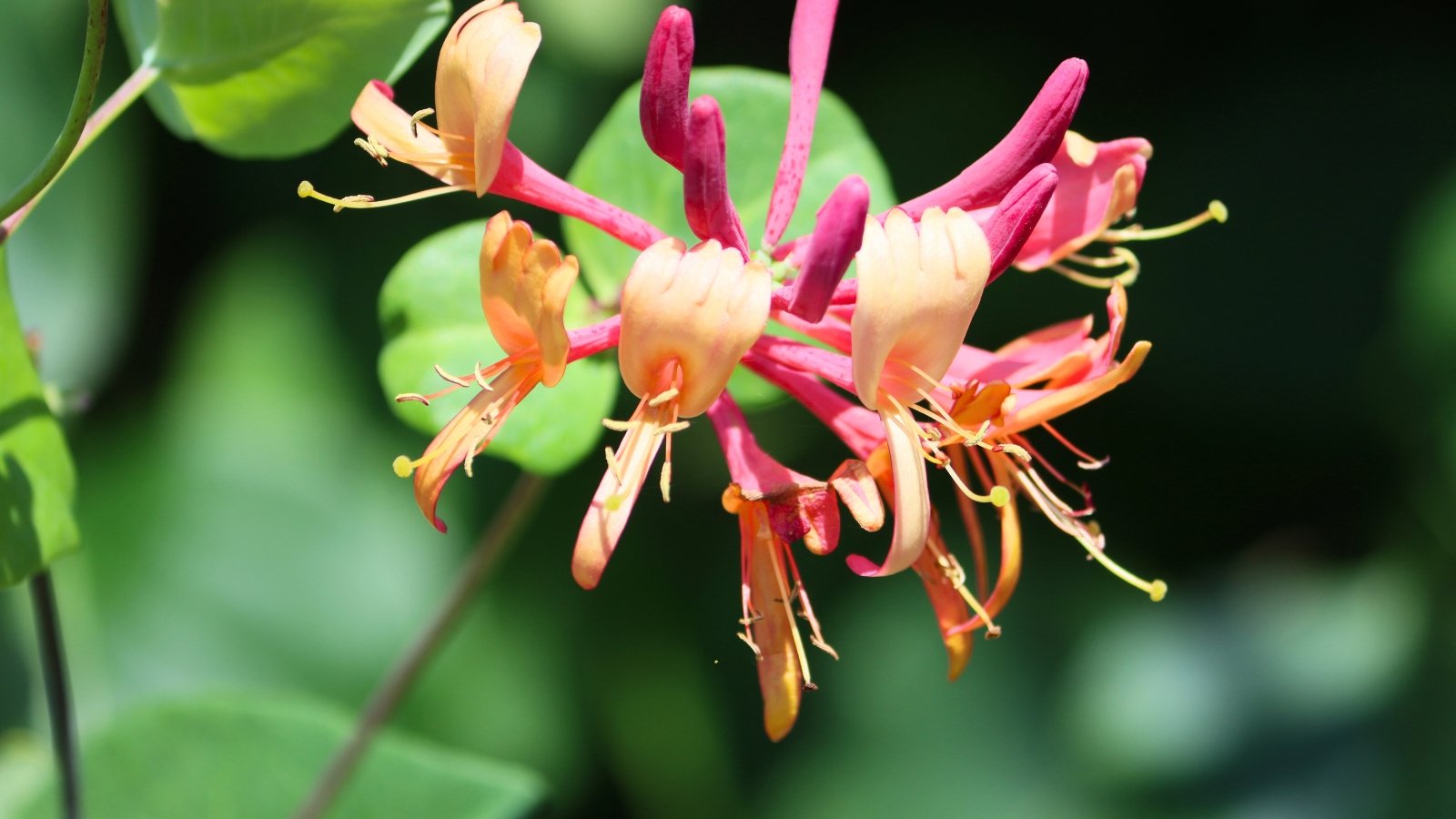 Bright blooms attract hummingbirds and brighten shady spots.
Bright blooms attract hummingbirds and brighten shady spots.Although invasive honeysuckles are common, your chicken-adjacent garden doesn’t have to include these. With at least a dozen species native to North America, there is certainly one that fits in, and supports local wildlife. Lonicera sempervirens, red coral honeysuckle, has a wide range, for instance, from southeast Maine to Florida, then west to east Texas.
There are other south and northwest North American species if you don’t live in this range. But aside from indigeneity, there’s no problem with your chickens nibbling on these vines a bit. However, plant this one slightly away from others on this list, as different species can cause some stomach upset when consumed in excess.
Lavender
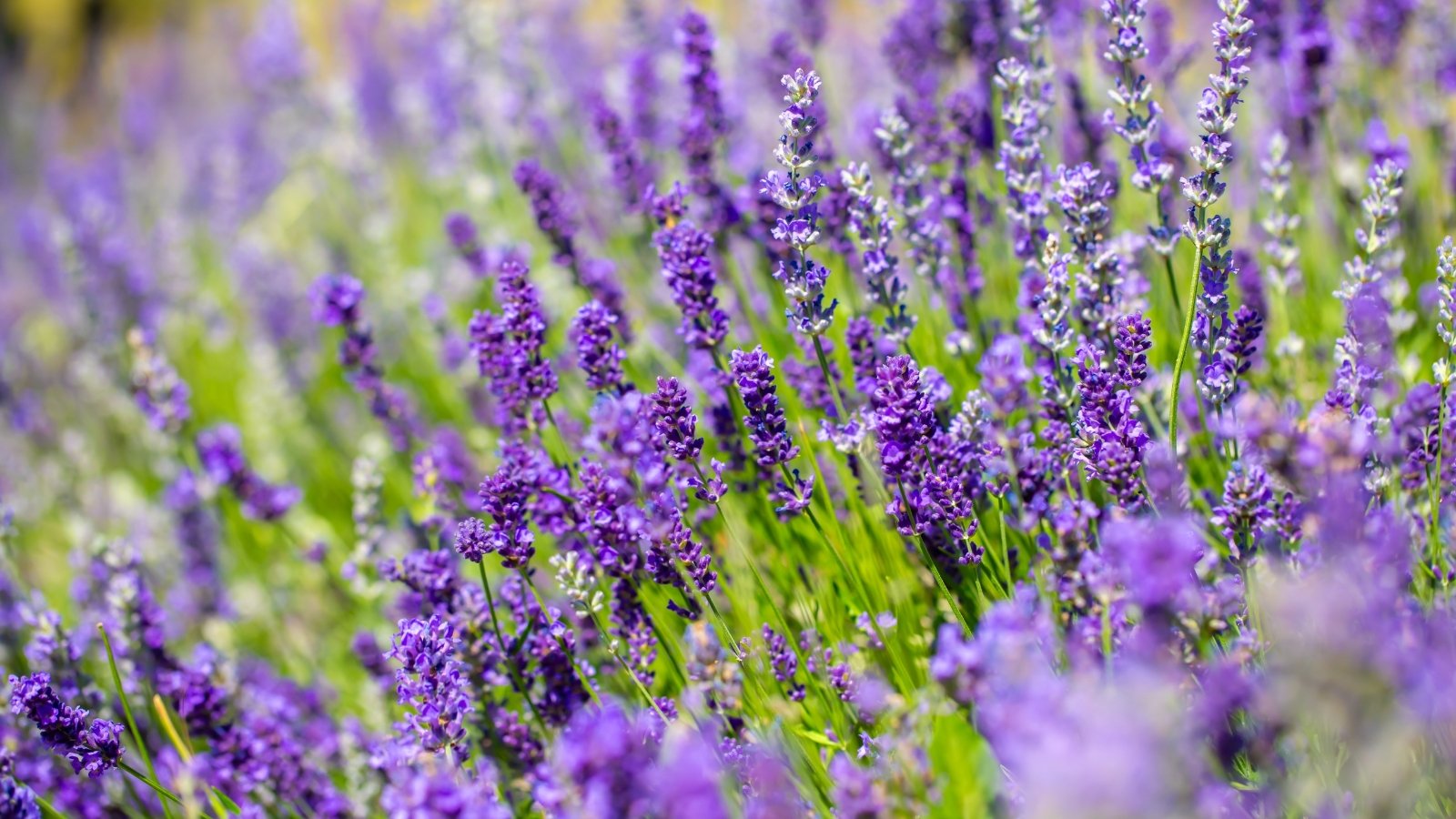 The calming scent of lavender perfumes the whole yard.
The calming scent of lavender perfumes the whole yard.Herbs are used in supplementing chickens to promote better health overall, so it’s no surprise that lavender is safe for a garden where chickens roam. Lavender oils have proven calming properties for humans, mice, rats, and rabbits. And chickens have no problems with the plants whatsoever.
In warmer areas, Spanish lavender performs well. In cooler ones, English lavender or more specifically, the Munstead variety is a good choice. It’s perennial in the majority of the US, and its scent is simply divine. Lavender is one of those herbs I spring for whenever I want a bit of calm in my teacup.
Lilac
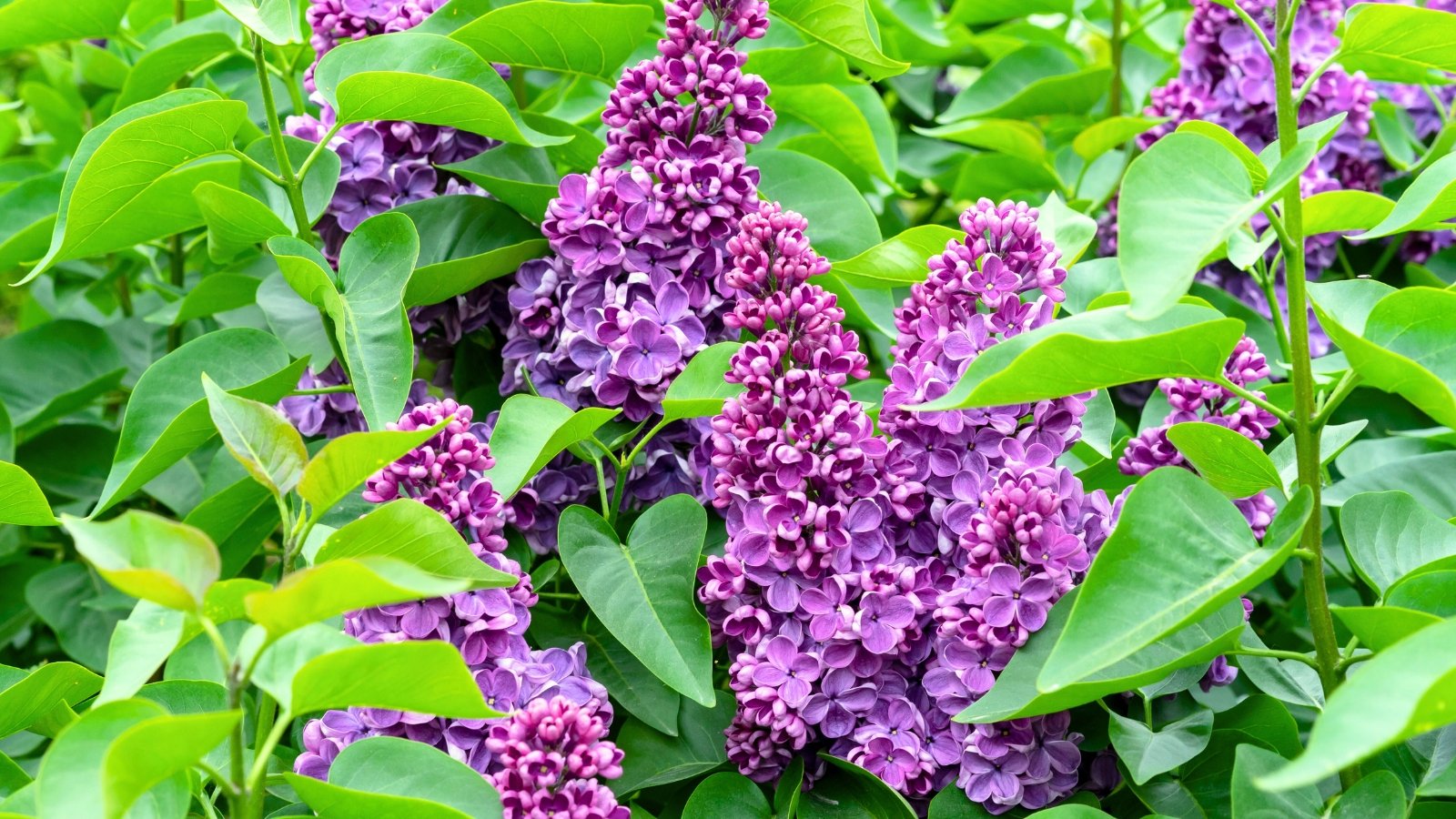 Lilacs are a cottage garden favorite.
Lilacs are a cottage garden favorite.The scent of lilac in the spring is incomparable, and thankfully, it is safe for chickens. While there are claims about the plant’s ability to improve chicken health, it’s hard to find any conclusive evidence of that. What we know for sure is that lilacs don’t harm them.
There is a wide range of Syringa species adapted to many different climates. Within their hardiness range, as long as they have rich, well draining soil and plenty of sun, they’ll thrive. If you already have a backyard orchard, plant a shorter variety underneath your trees for a boost in pollination and fruit set. Your chickens will use more mature shrubs as cover.

Rose
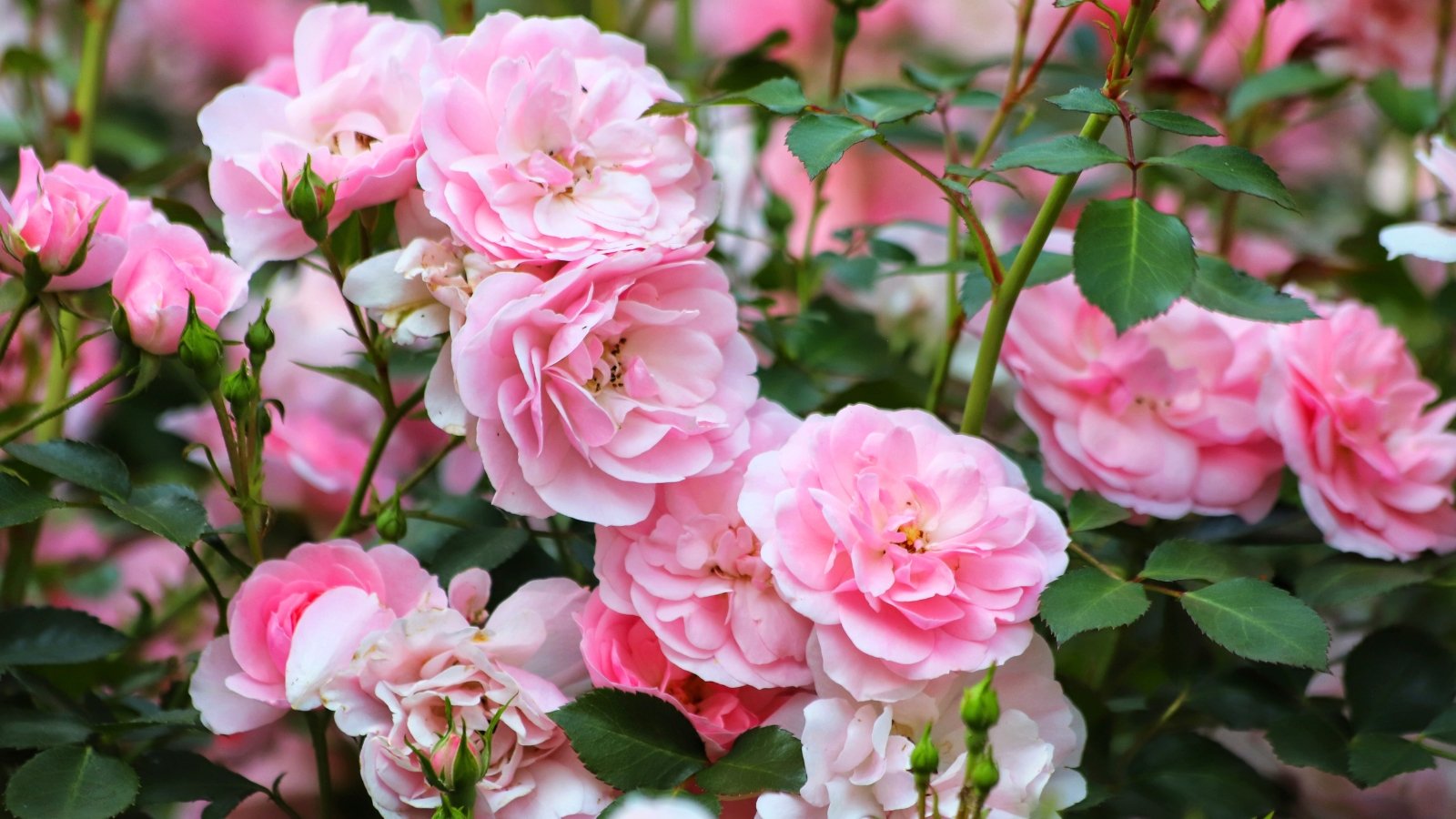 Climbing or bushy, these flowers add beauty and sweet scent.
Climbing or bushy, these flowers add beauty and sweet scent.Roses are another innocuous plant for chickens. Like any garden, they can scratch up and destroy your roses, but all parts are nontoxic for them. If you enjoy rose gardening, and you want to incorporate chickens into your homestead, that’s totally doable.
All manner of roses are available to people across the hardiness spectrum, though most rose hardiness occurs in zones 5 through 9. There are roses adapted to very cold regions of zone 2, and hotter ones all the way to zone 11, though. Pick a climber, a hybrid tea, floribunda, or even an heirloom for maximum scent. The rose world is yours, even if chickens are a consideration.
Viburnum
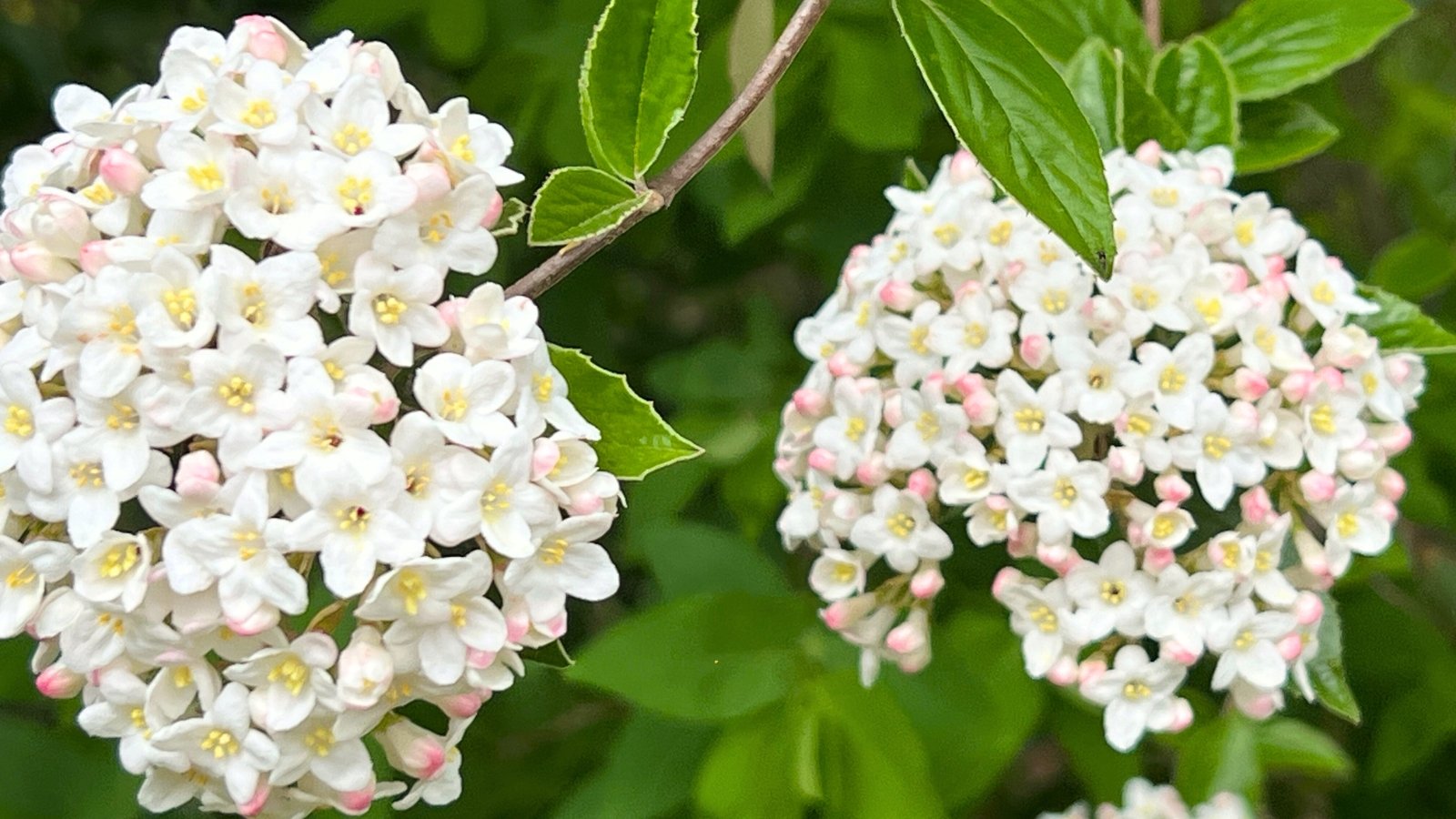 Sturdy shrubs offer perfect shelter without getting easily damaged.
Sturdy shrubs offer perfect shelter without getting easily damaged.An established Viburnum is great cover for chickens, and they aren’t likely to destroy a larger plant. There are plenty of these lovely shrubs that top out at a few feet, though. Whether you opt for a young or a more mature one, chickens are safe with viburnums. Wild turkeys love the berries of Viburnum acerifolium, so chickens may enjoy them too.
This is yet another shrub that boosts pollination in an orchard, making it a great choice for dual chicken-fruit farmers. There are also many species native to the US, concentrated mostly in southeastern North America. That’s a boon for native plant lovers who raise chickens.


 4 weeks ago
12
4 weeks ago
12





















 English (US) ·
English (US) ·  French (CA) ·
French (CA) ·